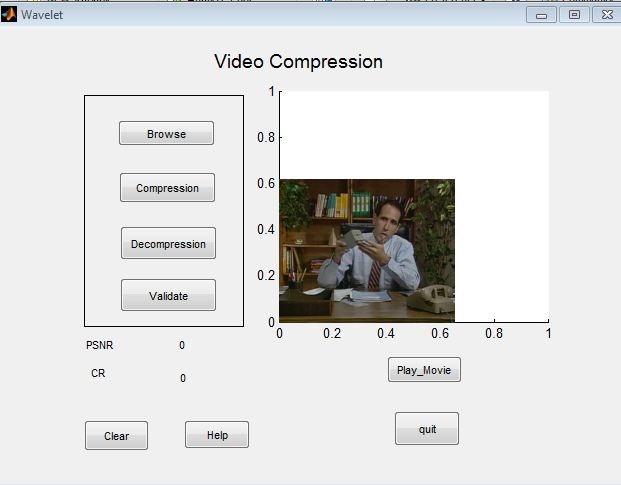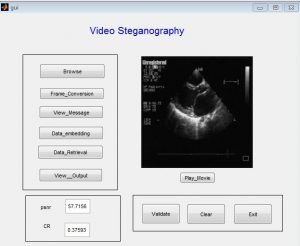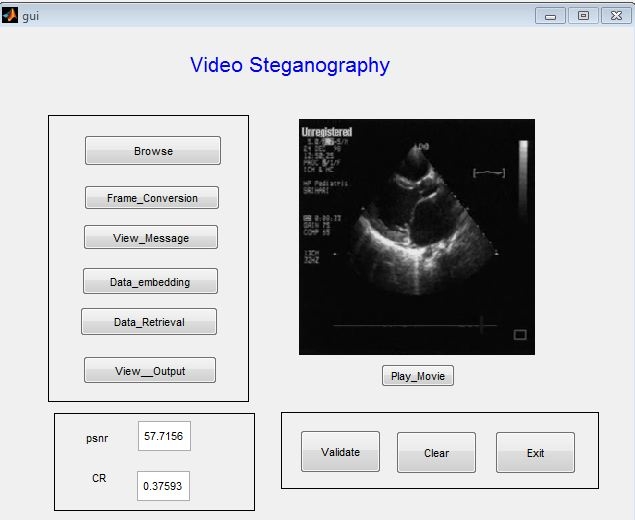Matlab code for Video Compression
₹6,000.00
This project propose a highly scalable video compression scheme based on the MPEG/H.264 Encoding
100 in stock
Description
OBJECTIVE OF THE PROJECT
The increasing demand to incorporate video data into telecommunication series, the corporate environment the entertainment industry, and even at home as made digital video technology a necessity. A problem however is that still image and digital video data rates are very large typically in the range of 150Mbits/sec. Data rates of this magnitude would consume a lot of the bandwidth, storage and computing resources in the typical personal computer. For this reason Video compression standards have been developed to eliminate picture redundancy, allowing video information to be transmitted and stored in a compact and efficient manner.
Uncompressed multimedia (graphics, audio and video) data requires considerable storage capacity and transmission bandwidth. Despite rapid progress in mass-storage density, processor speeds, and digital communication system performance, demand for data storage capacity and data-transmission bandwidth continues to outstrip the capabilities of available technologies. The recent growth of data intensive multimedia-based web applications have not only sustained the need for more efficient ways to encode signals and images but have made compression of such signals central to storage and communication.
SCOPE OF THE PROJECT
This project finds unlimited scope in data communication especially Image compression and Decompression. This H.263 standard, published by the International Telecommunication Union (ITU), supports video compression (coding) for video-conferene and ideo-telepony applications. It includes
- Desktop and room-based conferencing
- Video over the Internet and over telephone lines
- Surveillance and monitoring
- Telemedicine
- Computer-based training and education.
The H.263 is the ITU (International Telecommunication Union) recommended standard for very low bit rate video compression. We choose to analyze the performance
of H.263 video codec because it has lower computational and power requirements compared to other algorithms, and therefore is well suited for portable devices.
PROBLEM STATEMENT
The goals for this thesis have been the following.
One goal has been to compile an introduction to the subject of H.263 encoders and decoders. There exist a number of studies of various parts of the encoder and decoder, but complete treatments on a technical level are not as common. Material from papers, journals, and conference proceedings are used that best describe the various parts.
Another goal has been to search for algorithms that can be used to implement the most demanding components of an H. 263 Video compression standards.
- Motion compensation & Motion estimation
- Discrete Cosine Transform (DCT) &Inverse discrete cosine transform(IDCT)
- Scaling and Quantization
- Entropy encoding & Decoding
A third goal is to evaluate their performance with regard to speed, memory requirements, and complexity. These properties were chosen because they have the greatest impact on the implementation effort and the computation demands .
A final goal has been to design and implement an H.263 encoder & Decoder. This should be done in matlab . The source code should be easy to understand so that it can serve as a reference on the standard for designers that need to implement a encoder.
The proposed system should be compatible such way it has high compression rate which can be used for (DVB) digital video broadcasting.
This system can be enhanced to implement in video conferencing and video –on- demand applications. The files compressed using H.263 encoder are smaller than MPEG files which is faster to download. This advantage motivate us to begin the projectn .where we begin to modify the discrete cosine transform to adaptive DCT.
Results for Video Compression
Conclusion
The proposed adaptive Video codec is mainly meant for mobile communication and ownership protection. This algorithm can be extended to work with 3D video images. Since the codec eliminates particular insignificant subbands that saves the computations required to calculate a subband it can be implemented in areas where the battery constraints and the resources should be dealt economically. It has a high compression ratio if the parameter values applied are increased and enables to minimize the number of bits transmitted.
Though the proposed algorithm has advantages it has some limitations. Since the high pass sub bands are eliminated it incurs a heavy loss of information, when the elimination is performed for higher levels of decomposition. Also, since the bands are eliminated entirely without considering any significant bits in that band, the video obtained after compression is distorted. These drawbacks can be overcome by performing elimination of subbands only at lower levels of transform.
Since there is only a minimal degradation in video quality, the adaptive and energy efficient multiwavelet codec presents a potential solution to the problem of high energy and bandwidth requirements that cannot be fulfilled by limited growth in battery technologies or the projected growth in available cellular bandwidth. The energy efficient wavelet combined with the watermarking scheme used for digital copyright protection and management.






Reviews
There are no reviews yet.